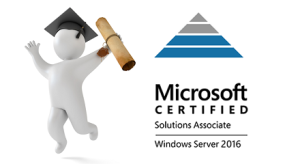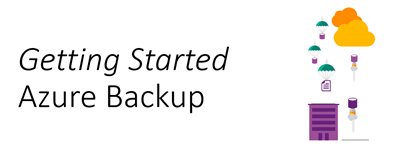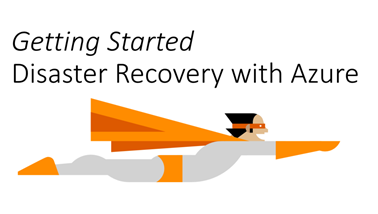
If you are MCSA certified on Windows Server 2012 or Windows Server 2008, you might want to upgrade your certification to Windows Server 2016. Fortunately you don’t have to go through the whole curriculum again and can just upgrade to MCSA Windows Server 2016 with one exam.
As an upgrade certification, 70-473 mainly verifies that you know the new features and differences compared to Windows Server 2012, so a very nice starting point is to review all the “What’s new in Windows Server 2016” sections for the different technologies and study their prerequisites, deployments methods and management techniques. The outline of this certification is located here: https://www.microsoft.com/en-us/learning/exam-70-743.aspx
Generally speaking the Windows Server 2016 docs center is a wealth of information and you can access it here: https://technet.microsoft.com/windows-server-docs/get-started/Windows-Server-2016
Below is my list of links mapping to the different exam categories. This list is here to help you review before going to the exam, but of course is not sufficient to pass and you will need some hands-on experience to succeed.
Install Windows Servers in host and compute environments
There has been some significant improvements in the toolset you use to manage Windows, including a whole set of commands to manage the new DIY edition of Windows: Nano Server. In this area we check your basic knowledge of DSC to manage configurations of Windows, and let me remind you that you cannot anymore switch from graphical to core editions of Windows and vice/versa. Very importantly we want to make sure you know how to service images online or offline.
General changes related to installation and management are documented here – https://technet.microsoft.com/en-us/windows-server-docs/management/management-and-automation
Install, upgrade, and migrate servers and workloads
Install and configure Nano Server
Create, manage, and maintain images for deployment
Implement storage solutions
In this section we verify that you know how to configure a resilient storage infrastructure including support for DCB, Multipath IO and SMB 3.0. We verify that you know the scenarios and mechanisms for Storage replica server to server, cluster-to-cluster and in stretch cluster topology.
General changes related to storage are documented here: What’s new in storage in Windows Server 2016 – https://technet.microsoft.com/en-us/windows-server-docs/storage/whats-new-in-storage
Implement Server Storage
Implement Data Deduplication
Implement Hyper-V
Hyper-V has evolved and now allows nested virtualization, secure boot with Linux VM, and PowerShell direct. Production checkpoints allows to do VM “snapshots” that are using VSS providers so that you can use that as a valid “backup”. Shielded VM (preventing the fabric administrator to access the VM data and to run the VM in another fabric.) are also a topic to work before you go to the exam.
All the details are here: What’s new on Hyper-V on Windows Server 2016 – https://technet.microsoft.com/en-us/windows-server-docs/compute/hyper-v/what-s-new-in-hyper-v-on-windows
Install and configure Hyper-V
Configure virtual machine (VM) settings
Configure Hyper-V storage
Configure Hyper-V networking
Implement Windows containers
Containers is a new way to deploy and manage applications in Windows. You can deploy and manage containers using Docker on Windows as on Linux.
Windows Containers Documentation – https://msdn.microsoft.com/virtualization/windowscontainers/containers_welcome
Deploy Windows containers
Manage Windows containers
Implement high availability
Just to name a few important features to work on: Cluster Operating System Rolling Upgrade, Storage Replica and cloud witness
What’s new in Failover Clustering in Windows Server 2016 – https://technet.microsoft.com/en-us/windows-server-docs/failover-clustering/whats-new-in-failover-clustering
Implement high availability and disaster recovery options in Hyper-V
Implement failover clustering
Implement Storage Spaces Direct
Manage failover clustering
Manage VM movement in clustered nodes
Implement Domain Name System (DNS)
The DNS service in Windows Server 2016 implements a couple of new features like policies which allows you to send different results to client request based on criteria like subnets or hour of the day. It allows also to query IPv6 root hints by default and has a request pacer to limit request-intensive clients.
What’s new in DNS in Windows Server 2016 – https://technet.microsoft.com/en-us/windows-server-docs/networking/dns/what-s-new-in-dns-server
Install and configure DNS servers
Implement IP Address Management (IPAM)
Windows IPAM has new scenarios and integrated management possibilities. It will basically allows you to manage more efficiently your DNS and DHCP infrastructure without having the need to logon to the different consoles and granting you a better view on the whole infrastructure, physical or virtualized with VMM.
What’s new in IPAM – https://technet.microsoft.com/en-us/windows-server-docs/networking/technologies/ipam/what-s-new-in-ipam
Install and configure IPAM
Manage DNS and DHCP using IPAM
Implement network connectivity and remote access solutions
DirectAcccess had no major evolution in Windows Server 2016, so you can rely on your Windows Server 2012 R2 knowledge. Most of the new features are related to SDN multi-tenant gateway implementation and BGP support.
Implement virtual private network (VPN) and DirectAccess solutions
Implement an advanced network infrastructure
In this section, we evaluate your knowledge of the new SDN architecture of Windows Server 2016. It now has a real SDN controller which is acting as a central point to manage and deploy network definitions and policies via software calls.
Windows Server 2016 Supported Networking Scenarios – https://technet.microsoft.com/en-us/windows-server-docs/networking/windows-server-2016-supported-networking-scenarios
Implement high performance network solutions
Determine scenarios and requirements for implementing software-defined networking (SDN)
Install and configure Active Directory Domain Services (AD DS)
AD has new features mainly related to Azure AD integration, better security and Just in Time Admin concepts. For the exam, we will also check that you know how to administer replication topology and FSMO roles operations in PowerShell.
What’s new in Active Directory Domain Services for Windows Server 2016 – https://technet.microsoft.com/en-us/windows-server-docs/identity/whats-new-active-directory-domain-services
Install and configure domain controllers
Implement identity federation and access solutions
In this section, we exam the new features and mostly evaluate your PowerShell skills as most of the configuration happens here in scripting.
Install and configure Active Directory Federation Services (AD FS)
Implement Web Application Proxy (WAP)
Good luck for the exam! Would be happy to hear if that helped you pass!
Arnaud
![]()







